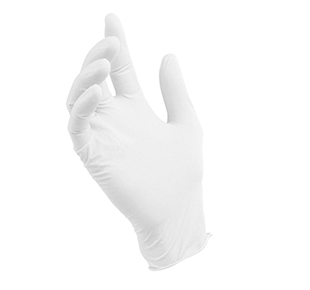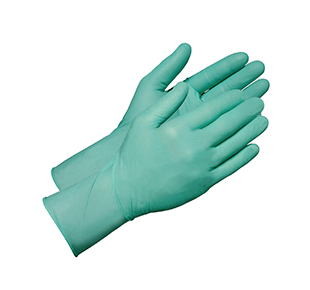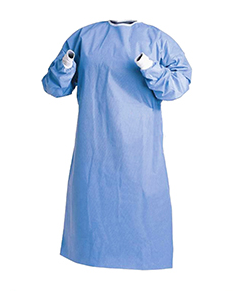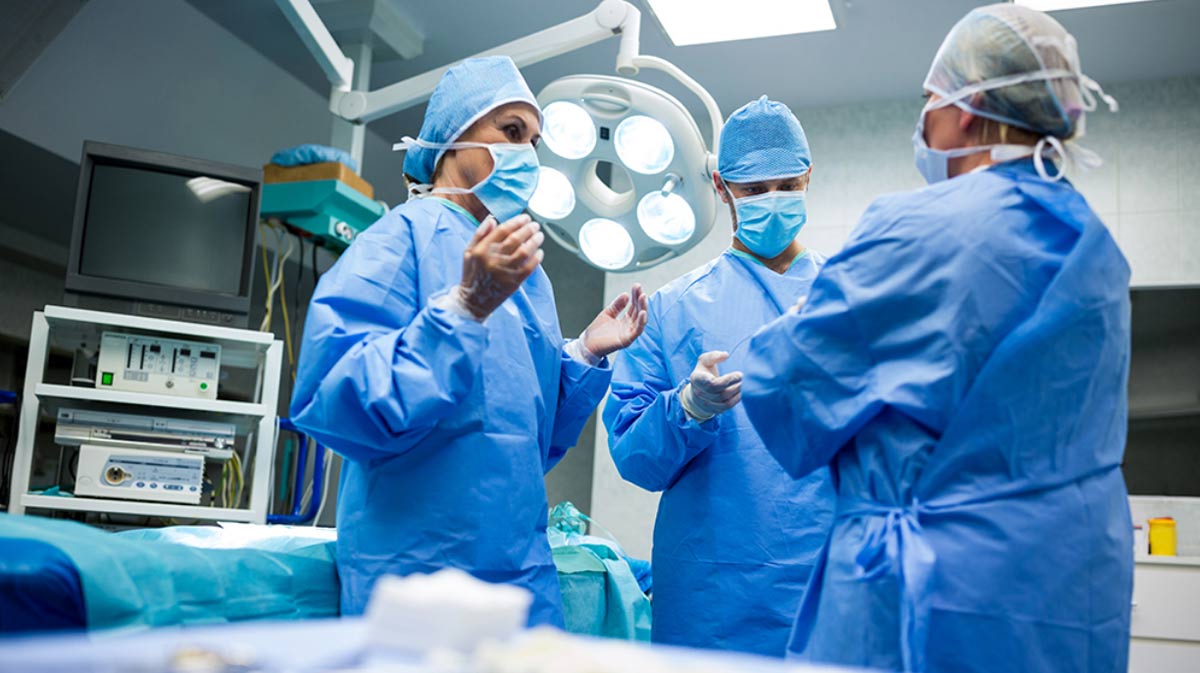Types of medical PPE
It’s important to ensure you’re selecting appropriate PPE in your efforts to keep hospital patients and staff safe. While a face mask might work perfectly to shield you in an industrial environment, it will do very little to stop the spread
of MRSA or other potentially deadly viruses. When thinking about the kind of protection you’ll need from a healthcare perspective, there are three primary areas which experts suggest you focus on.
Gloves
In their base form, these gloves keep substances which are potentially dangerous off of a person’s hands. In turn, this will prevent the spread of an infection.
There are two types of glove which are used in hospitals:
Sterile
These are the preferred option when someone is forced to reach out and make physical contact with a site which is susceptible to contamination. This includes smaller wounds.
Non-sterile
In order to prevent a wearer’s hands from becoming too heavily infected with micro-organisms, these types of gloves should be used. Non-sterile options are the preferred method when dealing with high levels of blood and other bodily
fluids.
Aside from these medical variances, there’s also a difference when it comes to the types of materials which gloves are made of. Some of the most common types include:
Latex
This option is very close-fitting, providing a barrier against germs. A risk here comes in the form of a potential latex allergy. It’s for this reason alternative materials are available.
Nitrile
While similar to latex, nitrile gloves provide slightly less elasticity. With far fewer people suffering allergic reactions to the material, it’s becoming more commonly used in hospitals.
Neoprene
These will be used when a latex-free option is required, but an additional level of movement is needed. The most common use for gloves made from this flexible material is surgery.


Aprons
These are designed to keep uniforms safe from contamination. Plastic aprons will usually be enough to provide protection against hazardous substances. However, in more severe circumstances, a fluid-repellent gown would need to be worn. The
difference in gown types will be determined by what job is required of them.
Surgical gowns
These are made of fluid-resistant substances and are measured from the chest down to the knees. They will be used for any invasive surgeries where there’s a chance infection might occur.
Surgical isolation gowns
These are very similar to surgical gowns, but are only used in extreme circumstances. They cover everything except binding, cuffs and hems.
Non-surgical gowns
Gowns of this variety are worn through the hospital in general use. They often cut off at the knee and neck, and can be worn by both patients and doctors alike.

Masks
It doesn’t take a genius to work out that masks are intended to protect your face and mouth from becoming contaminated. When it comes to a hospital environment, there are two types of masks which can be used.
Surgical masks
These are relatively simple in design, and will only cover your mouth and nose area to protect against basic splashes and droplets reaching your face.
Respirator masks
Designed to prevent airborne infection, these masks are most often used
in situations where there’s a chance disease will be able to spread through the
atmosphere. These will only be required around patients who’re suffering
from a
particularly viral disease.

